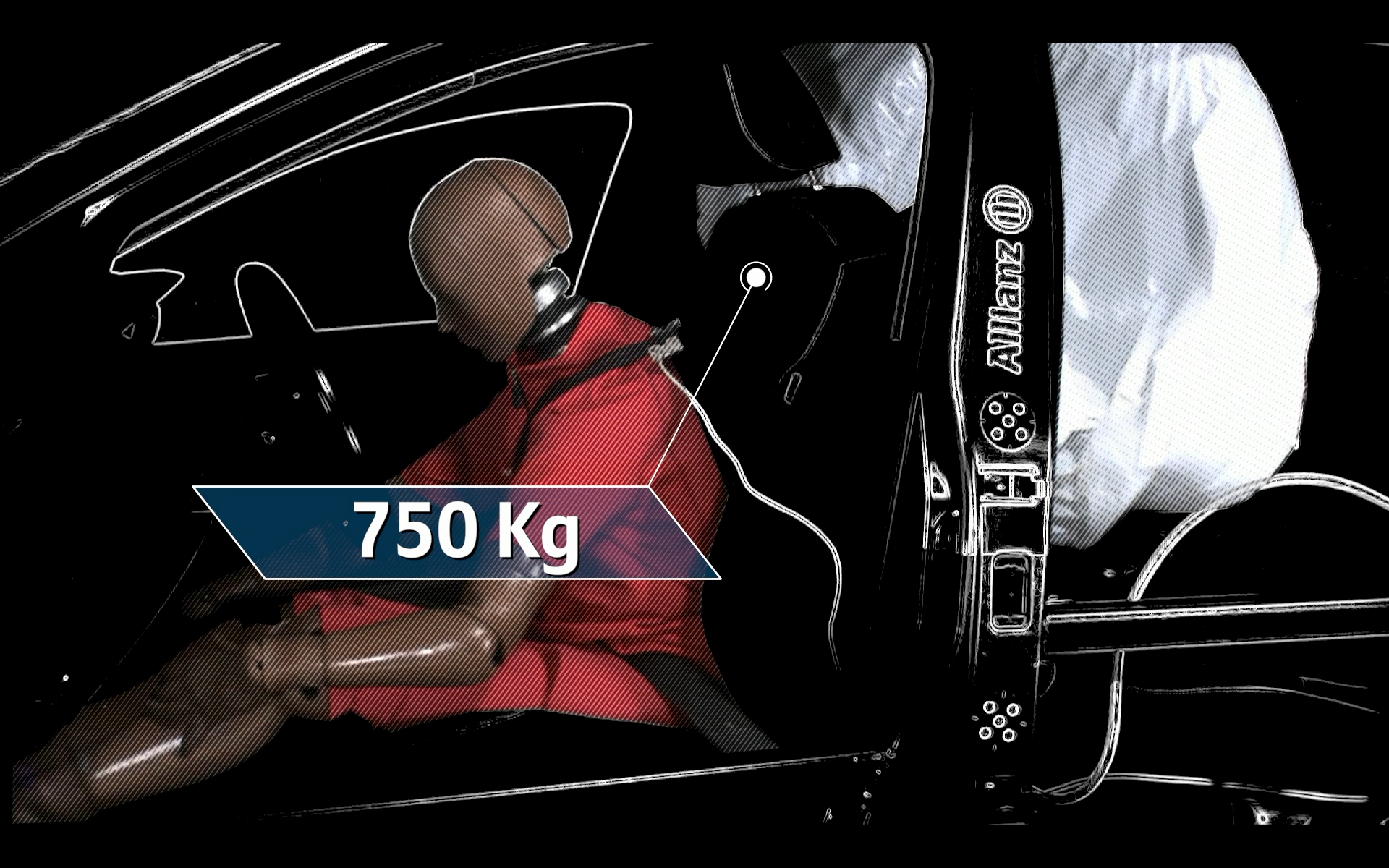Topics at the Allianz Center for Technology:
Transporting wheels in a car

March 2019
In several countries there is a legal requirement that under icy or snowy road conditions dedicated winter tyres have to be used. Therefore motorists know the necessity to change the vehicle tyres. Hence many car owners are forced to transport their car wheels from A to B. Especially with compact cars, transporting the wheels to change the tyres poses a greater challenge, as the wheels cannot be transported lying down in the boot for space reasons. In many cases, the wheels are therefore placed upright next to each other in the load compartment and the rear seat is released in its lock, as otherwise the tailgate cannot be closed.
As practical as this procedure is, however, it can also be dangerous: The rear bench can fall over and the wheels roll against or between the front seats even in the event of minor unevenness or braking. This is not only an enormous distraction for the driver, it also increases the risk of injury. To illustrate this, the AZT showed recordings of a normal ride as well as of a crash test. You can see the results in the video at the end of the page.
The transport of unsecured wheels inside a passenger car can not only be dangerous but may also not comply with the legal requirements in your country. At least for your own safety the goods in a vehicle must be secured in such a way that they can’t slip, fall over, roll back and forth or fall down even in the event of emergency braking or sudden evasive movement. The approved technical rules must be obeyed.
The following points must therefore be observed when transporting wheels in passenger cars:
Either you place the wheels in the hold and lash them individually or you place them upright next to each other in the hold and pull a lashing strap through the lashing eyes of the vehicle and centrally through the rims.
The securing must be carried out with suitable lashing straps (GS symbol, undamaged, sufficient tensile force).
The maximum tensile force of the belts is given in daN (decanewton). As a rule of thumb, the value of the tensile force in daN should be 25 times higher than the mass of the load in kg. An example of the lashing of four wheels: Depending on tyre size and rim, the weight of a car wheel is between approx. 15 and 25 kg. The maximum tractive force of the belt should therefore be at least 1500 daN (= 4 x 15 x 25).
Single wheels can also be stowed in the footwell behind the passenger seat, but only if the passenger seat remains unoccupied.
In the event of an accident, the seat belts on the unoccupied rear seat can stabilize the backrest in such a way that the wheels in the hold do not additionally endanger the front passengers.
If these rules are followed, it can be best ensured that the wheels do not injure the vehicle occupants in the event of a rear-end collision.
External video
This video is loaded in a YouTube player. This means that Google collects information about your use of the information provided and uses it for analysis and marketing purposes. However, if you would still like to view this video, you must change the cookie settings.
Open cookie settings